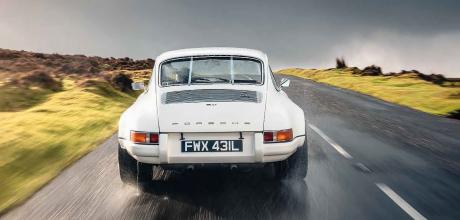1973 Porsche 911 S/ST - a racer specially civilised for the road
This 911S once pounded America’s road courses. Now it begins a new life as a road-legal homage to Porsche’s racing all-rounder, the 911 ST.
Words Keith Seume
Photography Jonathan Fleetwood, John Slade and Porsche archives
RACE RESULT
Ok, I’ll just get it warmed up.’ Richard Williams, one half of Cornwall-based Porsche specialist Williams Crawford grabs the keys but, rather than slipping into the driver’s seat of the off-white 911, simply reaches in to put the key in the ignition. Next step is to move to the back of the car, open the engine lid, turn the enrichment knob on the mechanical fuel pump a few clicks and push a remote starter button. ‘Well, it was a race car,’ he grins, as the flat-six coughs into life, first on four then five and — with a last spit — six cylinders. ‘OK, all yours. Have fun!’
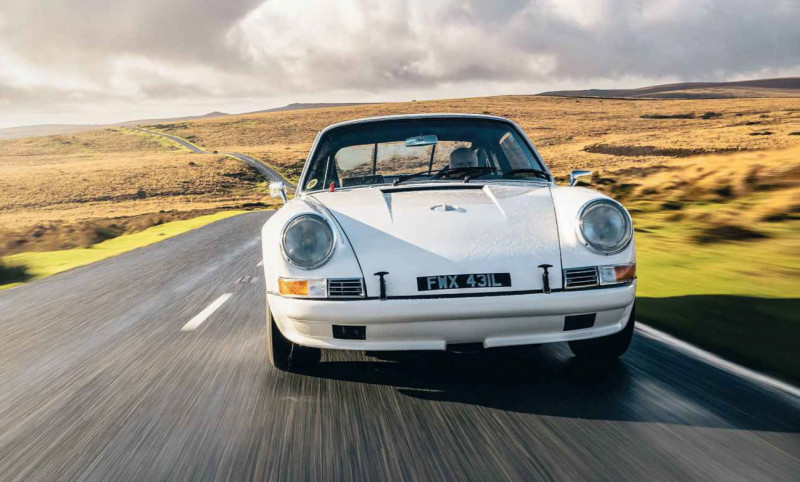
Uncompromising is a word that instantly springs to mind with a car like this: it’s a 1973 Porsche 911S that spent a sizeable portion of its life on the racetracks of mid-America, chasing down Corvettes and Camaros in the hands of the previous two owners. Up until just a few years ago it was a typical American club racer, complete with Sunoco-Porsche-inspired dark blue bodywork and glassfibre panels galore. But now it’s a fully road-legal and UK-registered hot-rod that draws attention wherever it goes, and not only because it retains its rev-happy short-stroke race engine — it also looks a million dollars following a year-long transformation at the hands of Williams Crawford. But let’s go back to the beginning...
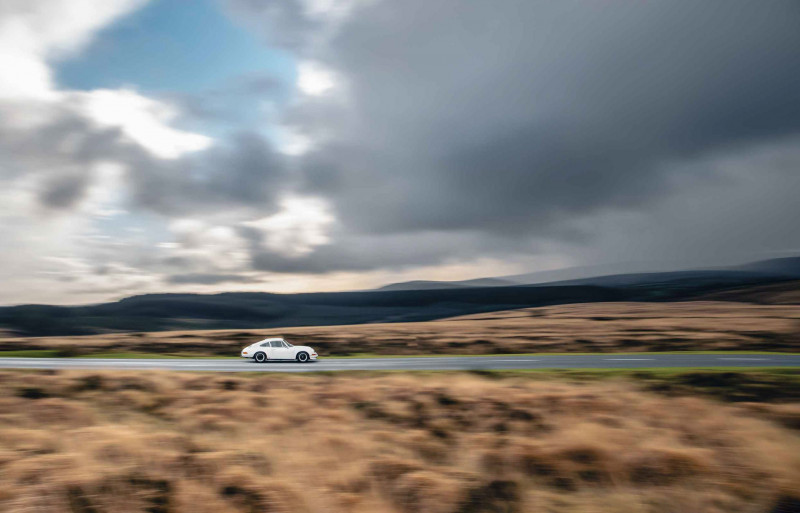
Chassis number 9113301089 rolled off the Stuttgart assembly line in April 1973, beginning its life as a 911S 2.4, itself a highly desirable model just one step down from the legendary Carrera RS 2.7.
‘The decision was made to turn the former race car into a stylish hot-rod for the road’
With 190bhp and 159lb ft of torque on tap (the RS produced 210bhp and 188lb ft respectively), the 2.4S was no slouch in its day. Indeed, on the open road many people would be hard-pressed to detect a massive difference in performance between the S and the RS. Of course, the latter has more power and torque but, in real terms, the 2.4S is just as much fun, yet it can be bought for much less than half the money in today’s market.
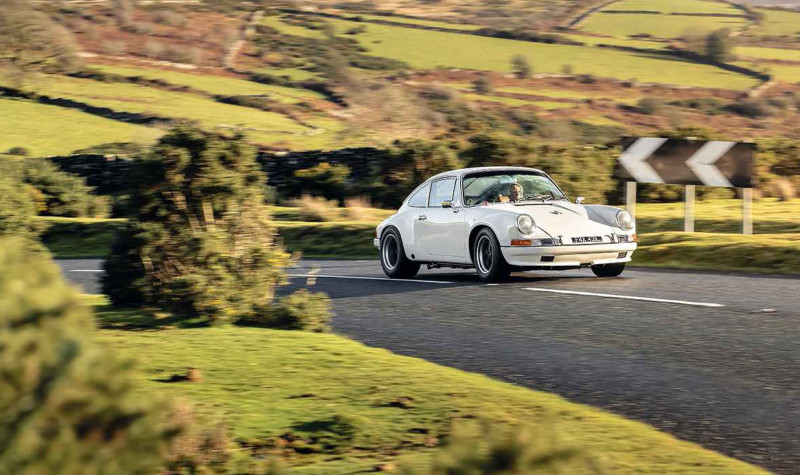
After two decades on the roads of California, the 1973 S was snapped up by Ohio-based Bruce Pickering to be used as the basis for a competitive entry in local PCA (Porsche Club of America) events, running in a variety of classes for historic sports (HSR) and production cars (Group 8-A/P). The expression no expense spared’ is often overused but, in this case, it pretty much sums-up the build.
‘The rest of the car underwent a transformation, with widened front and rear wings in glassfibre’
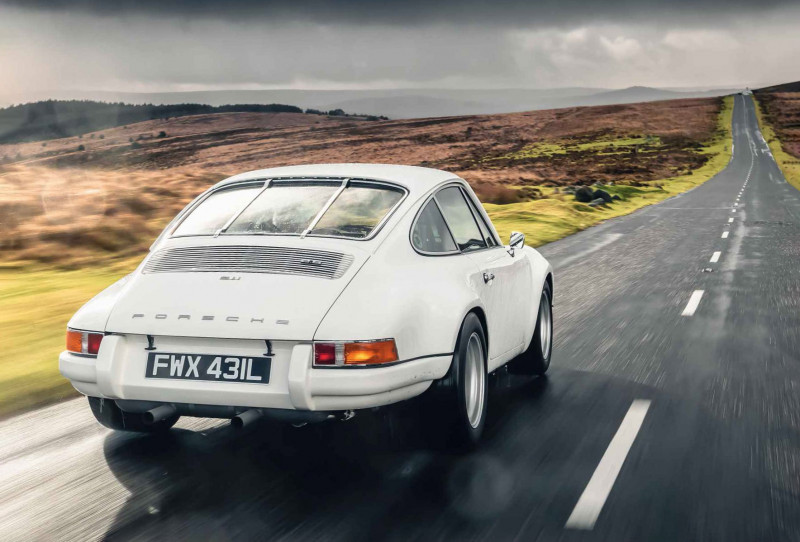
Starting with a set of 911E crankcases, a so-called short stroke’ six was assembled, based around a counterweighted 66mm forged crank and a set of 89mm cylinders and forged pistons. This gives a swept volume of 2454cc and, with the right head work and cams, the freedom to rev like few other flat-sixes. The S-spec heads were assembled with Porsche 906-spec cams from WebCam and drilled for two plugs per cylinder, although the twin-spark set-up was never actually put into use at the time.
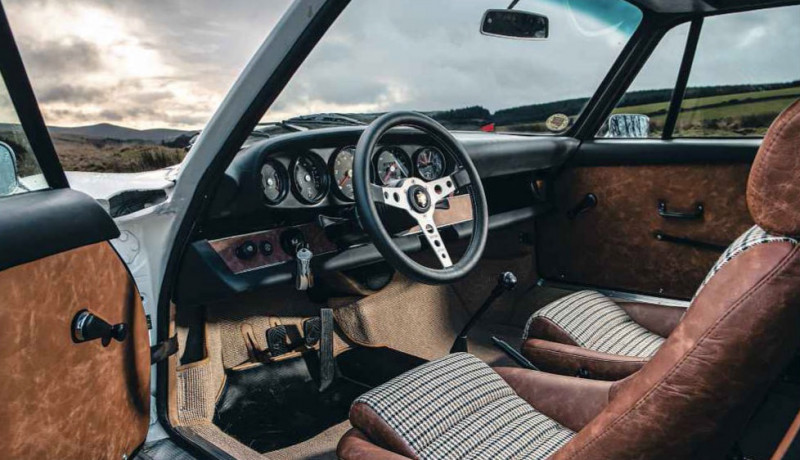
When it came to induction, the obvious choice in terms of simplicity and bang for your buck today would be to use a pair of triplechoke PMO carbs, a modern take on the Weber IO As of old, but instead what we see here is a full-on Bosch MFI (mechanical fuel-injection) set-up. When the engine was being assembled, PMOs were in the ascendency and, in some people’s eyes, not yet fully developed. ‘In the end, I went with MFI because Harry Payne, who was very successful in SVRA racing, said that was the best choice. He said it gave quicker throttle response, for one thing. The PMOs were expensive and unproven at the time,’ recalls Bruce.
‘Now it’s a fully road-legal hot-rod that draws attention wherever it goes — and it looks a million dollars’
The rest of the car underwent a major transformation, with widened front and rear wings in glassfibre, along with glassfibre doors and front and rear lids, into what in effect became full 911 ST trim. And what’s that?’ we hear you ask. OK, let’s try to explain. Up until 1970, Porsche had principally relied on the likes of the 904, 906 and, ultimately, the 917 for track success, while many of the 911’s earliest appearances were in rallies with not inconsiderable success. In 1964, for example, factory development engineers Peter Falk and Herbert Linge drove a 911 to fifth place overall in the gruelling 4600km Monte Carlo Rally.
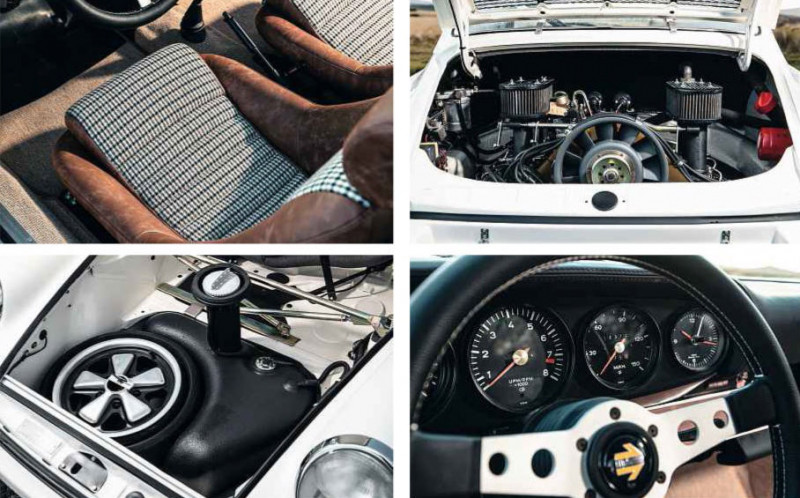
By 1967, the 911 had become a formidable rally weapon, ‘Quick’ Vic Elford and navigator David Stone winning the European Rally Championship in a 2.0-litre 911S, while rising star Sobieslav Zasada won the European Touring Car Championship at the wheel of the 911’s kid brother, the four-cylinder 912. Other notable successes included overall victory in the tough 86-hour Marathon de la Route on the Niirburgring.
Towards the end of that year, Porsche built a small series of lightweight 911s powered by the same engine fitted to the 906 (aka Carrera 6), called the 911R. Sadly, though, the 911R was never given the chance fully to prove itself, although a 911R did set a new endurance record at Monza, running for 96 hours nonstop at an average speed of just over 130mph! The problem was that the 911R was ineligible for homologation, so ran as a prototype in most events, putting it at something of a disadvantage.
Left and below Today a highly focused road car; in the past, this 911 raced against Corvettes and more in America

For the next couple of years, Porsche continued to concentrate on road rallies and endurance events with the 911 but there was evidence that things were starting to change. In 1967, four privateer 2.0-litre 911Ss ran at Le Mans for the first time, followed by another four the following year. By 1969, the number of 911s entered had grown to seven, with one car finishing tenth overall and first in class, the 911S morphing into the Group 3 ‘911 TRI
For the 1970 season, Porsches latest version of the 911S, powered by a 180bhp 2.2-litre six, became the focus for factory-developed rally and race cars. The pinnacle of its development was what became known as the 911 ST, the rally version retaining the stock 180bhp 2.2-litre engine (actually 2195cc), while those destined for use on the racetrack were given a boost in power output to 240bhp, thanks largely to a 1mm increase in bore size (giving 2247cc), backed up by twin-spark ignition.
It’s difficult accurately to assess how many 911 STs were built in period, as the factory made kits available to privateers who could then convert their own standard 911Ss to full- on race spec. However, Jurgen Barth, Porsche s Le Mans-winning driver and race-car historian, hinted at there being 15 race versions built using lighter-than-stock bodyshells (thinner-gauge metal was used for the major body pressings, while all extraneous brackets and mountings were eliminated).
Many examples ran with flared glassfibre front wings (to accommodate wider wheels — the rear quarters were similarly modified), along with glassfibre front and rear lids, bumpers and so on, doors being reskinned in aluminium. Plexiglass replaced all glass apart from the windscreen.
For rally use, the STs wore 6x16in and 7x16in Fuchs wheels, front and rear respectively. However, for race applications, the fronts were replaced by 7x16in Fuchs, with the rear axle sporting 9x16in Minilite magnesium rims. The reason for this mismatch was that Fuchs didn’t make a wheel wide enough to suit Porsche’s requirements at the time.
Undoubtedly the best-known ST of all was that prepared for Gerard Larrousse to drive in the 1970 Tour de France. At just 789kg, it was the lightest 911 to leave the factory, its 2395cc long-stroke engine developing some 245bhp at a heady 8000rpm.
Back to the subject of our feature. Bruce Pickering ran his ST-inspired race car for a number of years before offering it for sale. It was snapped up by an ex-pat Brit, John Slade, in the autumn of 2008. It came with a number of spare parts, including wheels, twin-plug distributor, MFI fuel pump, axles, dampers and several gear ratios. Oh, and a significant bundle of paperwork that detailed the build of the car from day one.
The new owner was no newcomer to competition, having raced an Alfasud back in the early 1990s in the UK, before taking it with him to the USA only to discover there weren’t many opportunities to race a car like that competitively. So he bought a 1974 2.7 Carrera and raced that extensively. A move to Texas introduced him to a group by the name of Corinthian Vintage Auto Racing Corporation, which inspired him to purchase the car you see here, fulfilling his desire to race a genuine early 911S rather than the heavier 1974 911 Carrera (G-body).
The way the regulations were written meant that the ST was bundled into the same class as heavy metal such as the aforementioned Corvettes and Camaros, rather than other
Porsches as might be the case in the UK. On some tracks, where part of the course ran on a NASCAR-style oval before dropping down to a twisty section on the infield, the Porsche could keep ahead of the opposition round the corners but fell prey to Yankee-style horsepower on the oval. If it rained, then things were evened out, the nimble Porsche able to hold its own among the big boys.
After a few years of racing at several different tracks throughout Texas and Oklahoma, the owner moved back to the UK, with the 911 loaded into a container and shipped across the Atlantic. The original intention had been to race the car over here but when John settled in Cornwall he realised that it wasn’t practical: the nearest circuit — Castle Combe in Wiltshire — was a five-hour tow from his new West Country home.
‘I considered restoring the car back to original but, to be honest, the costs involved would be so high that I might as well go and buy another 911S already done,’ says John. So the decision was made to move the car on, which is where Saltash-based Williams Crawford Ltd comes into the story.
Investigation in the workshop, under the eye of restoration guru Graham Kidd, showed that the car was virtually rust-free, testimony to its past life in California and then on the racetrack. All it needed was a new owner with vision — and that’s where Andy Hibbs steps in. A Jersey-based Porsche enthusiast, Andy had owned a series of 911s over the years and long admired the legendary 911 ST. After discussion with Adrian Crawford, the other half of the Williams Crawford partnership, the decision was made to turn the former race car into a stylish hot-rod for the road.
With the car stripped to a bare shell, first to go was the roll-cage that had been fitted in the USA. Then, as the shell had been modified to accept a fuel-cell in place of the original steel tank, the boot-floor and crossmember were replaced so that a stock tank could be reinstalled. The rear wings needed to be widened slightly to accommodate the proposed 11x16in rear wheels, which involved having to cut and reprofile the existing glassfibre flares.
The lightweight doors had to go, too, making way for a pair of original steel ones that came with the car. These had clearly been repaired’ at some point in typical 1990s fashion, with a slide hammer used to pull a large dent on the passenger side, leading to more work to put things right. Glass was reinstated all round, too, in place of the race-weight Lexan.
Mechanically the drivetrain was gone through in detail, with the basic spec remaining unchanged from the 911s days as a race car, although it’s been upgraded to twin-plug ignition while K&N filters keep out the dust and dirt. Brakes feature the same bias- adjustable six- and four-pot Bremtek calipers as before, while the coil-over-dampers now work in conjunction with the original torsion bars. Wheels are Fuchs (9x16ins at the front, with 11x16ins at the rear) shod with Michelin TB15 tyres — the closest you can get to a racing tyre on the road.
During the build, new owner Andy and the crew at Williams Crawford swapped ideas, with Andy preferring a return to Light Ivory for the exterior repaint, while the interior has been trimmed in brown textured leather and Pepita (houndstooth fabric, as favoured by Porsche), with German square-weave’ carpeting throughout. A new Heigo half-cage completes the rather stunning interior. As for creature comforts such as air-con, forget it. A small electric heater provides just enough warmth to demist the windscreen, but little more. This is no luxury car.
The overall effect is impressive, not only because as a 911 ST homage it looks so damned good with its flared wings, classic 911 styling and fat Fuchs wheels, but because the team has managed to achieve a difficult compromise of acceptable road manners while retaining racecar handling and performance.
Once warm, the engine behaves like any short-stroke Porsche six. It’s all pretty mellow down low, with decent torque and a great engine note, but as soon as the tacho needle climbs towards the 4000rpm mark, the beast within starts to come alive. The engine note deepens and the push in the back becomes firmer as the revs rise. By the time it nears the 7200rpm redline, the outside world begins to blur and suddenly it’s time to snatch another gear as quickly as the stock shifter allows, the 915 transmission better than most we’ve experienced in this respect.
If there’s one word to describe the handling on damp Dartmoor roads, it would be nervous’ — the TBISs need heat to work their best, while the stiff race-prepped suspension provides instant feedback, reacting to every tiny lump and bump. The Momo steering wheel kicks in your hands but it’s all part of life with a lightweight 911 hot-rod. Make no bones about it, this is a real driver’s car, one that will be equally at home at a trackday or taking on an Alpine pass.
As a tribute to one of the greatest 911s of its day, it brings home to you just how overcomplicated cars have become. They cosset you, protecting you from the outside world, whereas driving this ST is a visceral experience that no modern 911 can ever match.
THANKS TO Williams Crawford Ltd, williamscrawford.co.uk
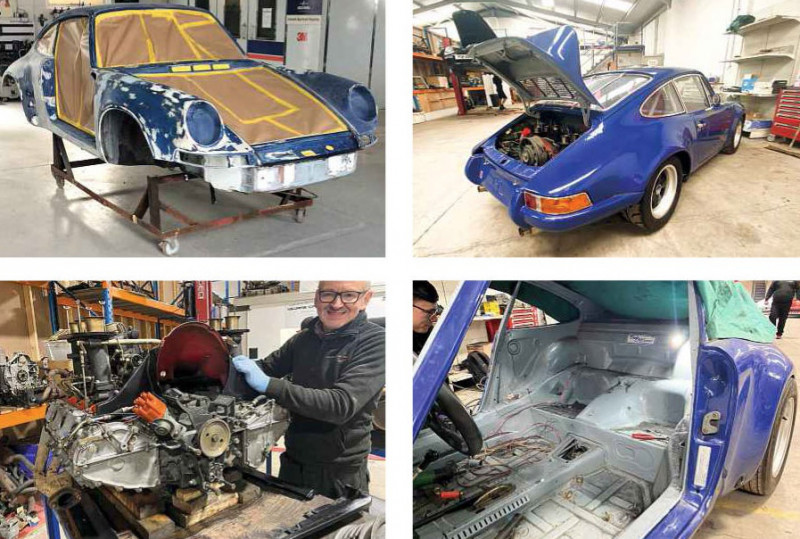
Above Stripped to a bare bodyshell and then rebuilt with wider lightweight wings but original doors and glass — plus, of course, a hot 2.5-litre flat-six.
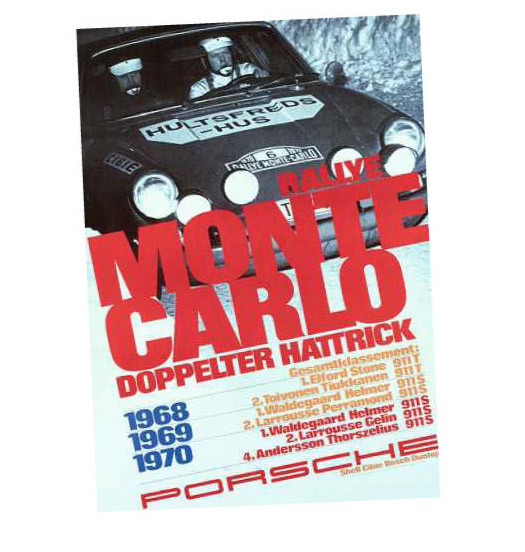
Above, right and below 911 was no stranger to success on the Monte; competition nature brought to the fore here; hot engine, Monza-style filler yet distinctly civilised interior.
Opposite and left Once a racer in America, now restored and recreated as an ST homage — and quite a handful here on the stunning but damp Dartmoor roads.


